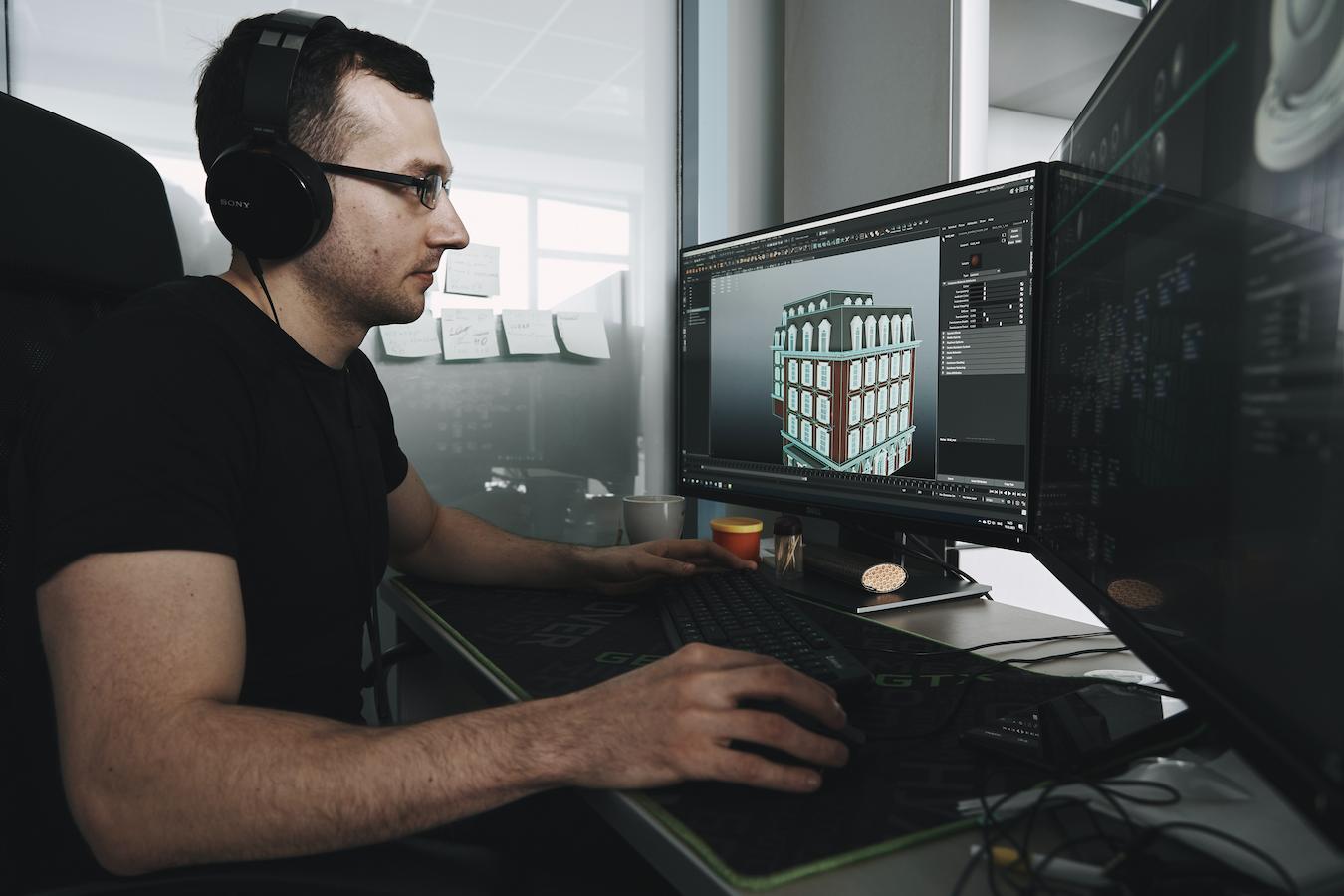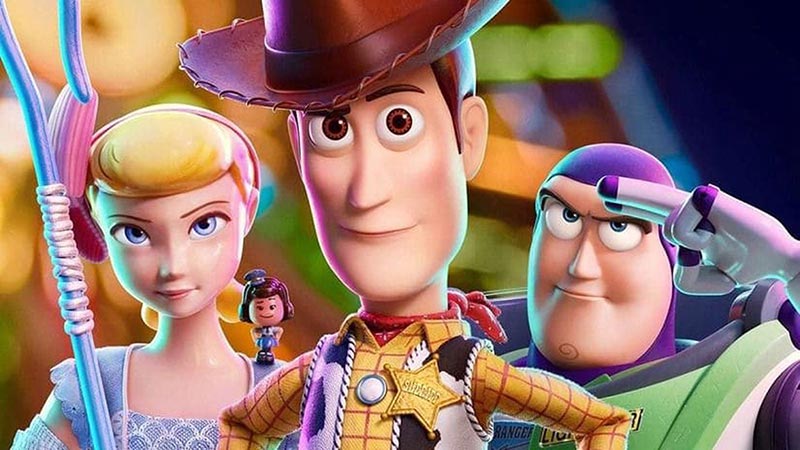Information, Learning
What is CGI Animation and How Does it Work?
CGI, or Computer Generated Imagery, is a powerful tool that has revolutionized the world of animation. Although it has been in use since the 1970s, advancements in technology have made it more accessible than ever before. Whether you're watching a blockbuster movie or an animated show, chances are you're seeing some form of CGI animation. But what exactly is CGI animation? How does it work? In this blog post, we'll dive into the fascinating world of CGI animation and explore everything from its basic principles to its practical applications in the entertainment industry. So strap in and get ready for a journey through the exciting world of digital animation!

- 1. Introduction to CGI Animation
- 2. The History of CGI Animation
- 3. How CGI Animation Works
- 4. The Role of Computer Graphics in CGI Animation
- 5. Key Applications of CGI Animation
- 6. The Creation Process of CGI Animation
- 7. The Benefits and Limitations of CGI Animation
- 8. Notable Examples of CGI Animation in Film and Television
- 9. The Future of CGI Animation
- 10. Conclusion and Final Thoughts on CGI Animation
1. Introduction to CGI Animation
As someone who has always been fascinated by the world of animation and visual effects, I have always been intrigued by the power of computer-generated imagery (CGI) animation. In this blog, we will be exploring what CGI animation is, how it works, and some of its key applications. In the following sections, we will delve into the history, creation process, and notable examples of CGI animation in film and television. Whether you're a fan of blockbuster films or video games, it's impossible to ignore the impact that CGI animation has had on the industry. Join me as we dive into the world of CGI animation and uncover the secrets behind its power and popularity.

2. The History of CGI Animation
As I mentioned in the introduction section, CGI animation is a form of computer-generated imagery used in various applications such as film, television, and video games. This remarkable animation technique didn’t appear overnight but rather has a fascinating history that dates back to the 1950s. Animation cells with patterns created using mechanical computers were early precursors to the animations we see today. I also touched on how essential the role of computer graphics is in CGI animation, which has played a significant part in its development. In this section, I would like to talk more about the history of CGI animation and how it has evolved. From its earliest days in the 1940s, I have seen how CGI animation has gone from simple 2D images to becoming a popular form of 3D animation in the 2000s. The history of CGI animation is a fascinating subject, and as an animator myself, it’s thoroughly enjoyable to explore.

3. How CGI Animation Works
As we've discussed earlier, CGI animation involves the creation of still or animated visual content with the help of computer software. But how does it work? In basic terms, it all begins with a concept and a storyboard, which outlines what the final product should look like. From there, an artist creates a 3D model that is then textured and shaded to give it a realistic appearance. Once the model is complete, it can be animated using software that generates keyframes, or still images that show the motion of the object at different points in time. These keyframes are then rendered into a seamless animation using advanced computer algorithms. The result is the creation of lifelike animations that can be used in movies, TV shows, video games, and more. In addition to technical skills, creating high-quality CGI animations also requires creativity and artistic talent to bring characters and scenes to life.

4. The Role of Computer Graphics in CGI Animation
As we dive deeper into the world of CGI animation, it's important to understand the role that computer graphics play in the creation of these visual masterpieces. Computer graphics are the backbone of CGI animation, allowing animators to create stunning 2D and 3D graphics that are impossible to create using traditional animation techniques. By using sophisticated software and powerful computer hardware, animators can bring their imaginative visions to life with precision and accuracy. From lighting and shading to animation and rendering, computer graphics are the key to the success of CGI animation. In the next section, we'll explore some of the key applications of CGI animation and discuss how these techniques are used in the creation process.

5. Key Applications of CGI Animation
When it comes to the applications of CGI animation, the possibilities are truly endless. In my previous sections, I provided a comprehensive overview of what CGI animation is, how it works, and even looked at the history of this technology. In this section, I want to delve a little deeper into the key applications of CGI animation. This technology has revolutionized the way we create visual content, and its impact can be felt across numerous industries, including film, television, video games, architecture, product design, and advertising. CGI animation has been used to create stunning effects, realistic environments, and captivating characters that would have been impossible to achieve with traditional methods. The ability to create 3D models, and manipulate them in ways that feel real, has made it possible to bring even the wildest imaginations to life. In the next section, I will discuss the creation process of CGI animation, and the tools used by professionals to achieve their artistic vision.

6. The Creation Process of CGI Animation
As we have explored in the previous sections, CGI animation involves the creation of animated visual content using computer software. The creation process of CGI animation can be broken down into three distinct phases: pre-production, production, and post-production. In pre-production, the focus is on developing the initial concept, creating storyboards, designing characters and landscapes, and mapping out the sequence of events. This stage requires the collaboration of various teams, including writers, directors, and designers.
In production, the CGI animators bring the concept to life by creating 3D models of the characters and props using specialized software. These models are then rigged and placed in the virtual environment, where the animators use keyframe animation to create movements and transitions between poses. Finally, in post-production, the animators add lighting, textures, and special effects to the animation, as well as fine-tune the movements and overall look of the final product.
The process requires a high level of creativity, technical skill, and attention to detail from the various teams involved, but it can result in visually stunning and engaging animations. Furthermore, the use of CGI animation allows for greater flexibility and faster production times compared to traditional animation methods. As we continue to see progress in technology, it's clear that CGI animation will continue to play a significant role in the entertainment industry.

7. The Benefits and Limitations of CGI Animation
As we explore the world of CGI animation, it is important to understand the benefits and limitations that come with this technology. One of the biggest advantages of CGI animation is the ability to create stunning visual effects that simply cannot be achieved with traditional animation methods. Additionally, the use of CGI animation allows for greater flexibility and control during the creation process, as animators can easily manipulate and adjust the animations as needed. However, there are also limitations to CGI animation, including the high cost of software and hardware necessary to create high-quality animations, as well as the potential for animations to look stiff and unnatural if not executed properly. By understanding the benefits and limitations of CGI animation, we can better appreciate the skill and creativity required to produce successful animated works using this technology.

8. Notable Examples of CGI Animation in Film and Television
When it comes to CGI animation, there are countless examples from the world of film and television. One notable example of CGI animation in the film is the use of motion capture technology in The Lord of the Rings trilogy to bring the character Gollum to life. Another example is the groundbreaking use of CGI animation in Jurassic Park, which brought dinosaurs to the big screen in a whole new way. In television, popular animated shows such as The Simpsons and South Park rely heavily on CGI animation to create their characters and worlds. The use of CGI animation has even become prevalent in live-action television shows, such as Game of Thrones and The Mandalorian, to create realistic creatures and special effects. Overall, the use of CGI animation has greatly expanded the possibilities for storytelling in both film and television and will only continue to play a major role in the entertainment industry.

9. The Future of CGI Animation
Looking ahead to the future of CGI animation, it is clear that this technology will continue to play a pivotal role in the entertainment industry. Thanks to its versatility and flexibility, CGI animation will remain a valuable tool for creating both live-action and animated films, as well as television shows and video games. In the coming years, we can expect to see even more advanced CGI techniques and technologies. This will likely involve the development of more sophisticated software and hardware, as well as the use of new techniques such as virtual reality and augmented reality. At the same time, there are sure to be limitations and challenges to overcome. For example, there will always be a need to balance the desire for realism with the practical limitations of current technology. Regardless of these challenges, however, the future of CGI animation is bright, and we can look forward to many exciting new developments in the years to come.

10. Conclusion and Final Thoughts on CGI Animation
After exploring the history, workings, and applications of CGI animation, it is clear that it has revolutionized the art of animation in the media and entertainment industry. Its ability to create realistic and intricate visual effects and characters have made it a go-to tool for filmmakers and animators alike. However, it is important to note that CGI animation is not without its limitations, including its potentially high costs and excessive reliance on technology. Nevertheless, as we continue to push the boundaries of digital technology, the future of CGI animation looks bright indeed. I am excited to see how this incredible technology evolves and transforms the world of animation in the years to come.